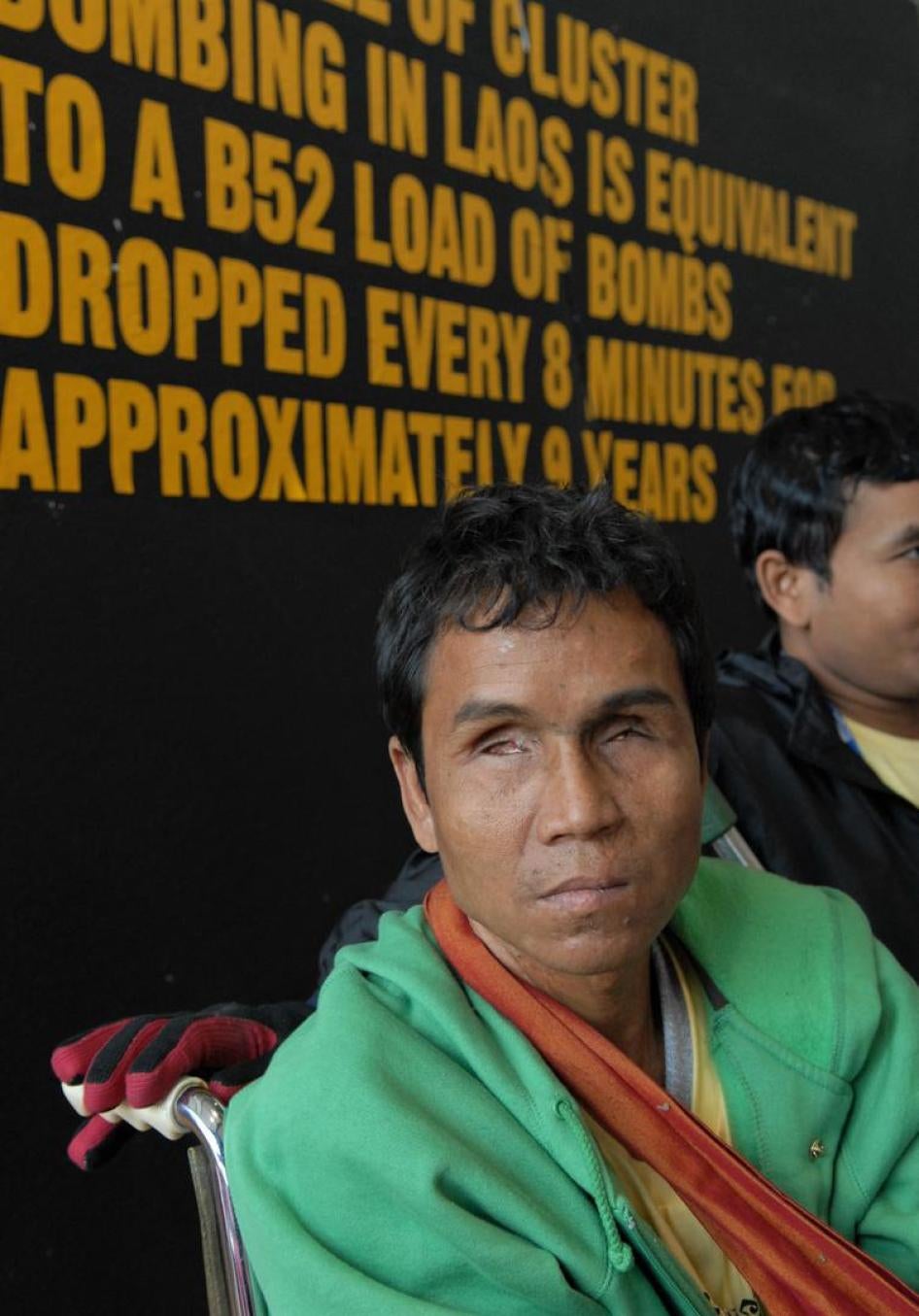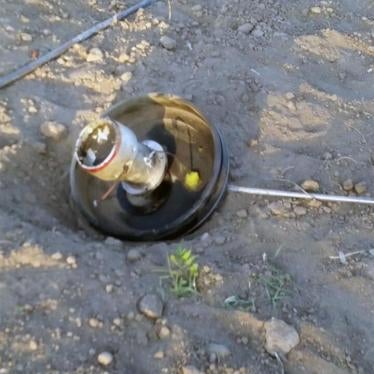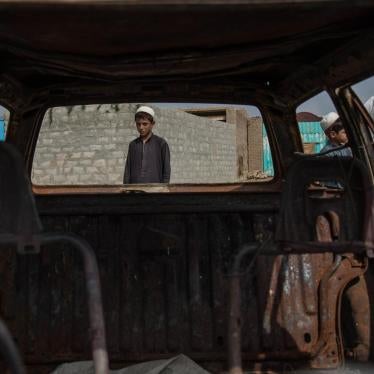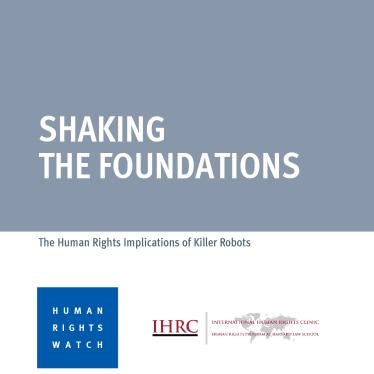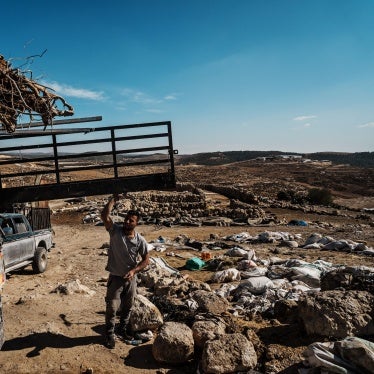(Washington, DC) – The United States’ move to end its longstanding policy not to use unreliable cluster munitions and to destroy its stocks completely disregards the widely accepted international ban on these weapons, Human Rights Watch said today.
The US is not one of the 102 states parties to the 2008 Convention on Cluster Munitions, which prohibits these weapons and requires clearance of their explosive remnants as well as assistance to victims. But the decision reverses the US commitment not to use cluster munitions that fail more than 1 percent of the time, leaving deadly unexploded munitions that can kill for years.
“After spending hundreds of millions of dollars researching alternatives to cluster munitions, the US has decided it can’t produce ‘safe’ cluster munitions so it will keep using ‘unsafe’ ones,” said Mary Wareham, arms division advocacy director at Human Rights Watch, which chairs the Cluster Munition Coalition. “The Trump administration is embracing repugnant weapons rejected by the international community, a move that could embolden others to use cluster munitions that have caused so much human suffering.”
Cluster munitions can be fired from the ground by artillery systems and rockets, or dropped from aircraft. They typically open in the air, dispersing multiple bomblets or submunitions over a wide area. Many submunitions fail to explode on initial impact, leaving unexploded duds that can act like landmines for years to come unless cleared and destroyed.
A Department of Defense policy memo signed on November 30, 2017, by Deputy Defense Secretary Patrick Shanahan indefinitely delays implementation of a ban on using unreliable types of cluster munitions that was due to take effect on January 1, 2019.
This new policy replaces a Department of Defense policy directive on cluster munitions issued in June 2008, during the administration of President George W. Bush, that required the US to remove all except a tiny fraction of its cluster munitions from active stockpile by the end of 2018 for eventual destruction. The 2008 policy required that the US not use cluster munitions that result in more than 1 percent unexploded ordnance (UXO) from 2019 onward. Senior Pentagon officials told Human Rights Watch after the November 30 announcement that the 2008 policy deadline for removing cluster munitions from active stocks had been “an aspirational goal.”
The new policy allows US military commanders to approve use of existing cluster munitions “until sufficient quantities” of “enhanced and more reliable” versions are developed and fielded. The new policy also facilitates US acquisition of cluster munitions from foreign sources to replenish stocks.
But it retains restrictions on US exports of cluster munitions under existing US law, allowing the US to export only cluster munitions that do not result in more than 1 percent unexploded ordnance, and requiring the recipient to make a commitment not to use the cluster munitions in civilian areas.
The US maintains that cluster munitions have military utility, but, with the exception of a single strike in Yemen in 2009, it has not used them since 2003 in Iraq.
According to an August 25 Department of Defense letter seen by Human Rights Watch, approximately 3.7 million cluster munitions, containing 406.7 million submunitions, have been destroyed from stocks since 2008. Approximately 3.7 million “additional excess and obsolete” cluster munitions, which equates to 324.3 million submunitions, have been removed from the active inventory and await demilitarization.
By comparison, 29 states parties to the Convention on Cluster Munitions have completed destruction of their stocks, a collective total of 1.4 million cluster munitions and more than 175 million submunitions. Germany held the largest stockpile among states parties and in November 2015 completed the destruction of 573,000 cluster munitions and 62 million submunitions.
The Cluster Munition Coalition is a global coalition of nongovernmental organizations co-founded and chaired by Human Rights Watch that works to ensure that all countries join and adhere to the 2008 Convention on Cluster Munitions.
“Allowing the US to again use notoriously unreliable cluster munitions is a gigantic step backward for efforts to protect civilians from the unacceptable harm caused by these weapons,” Wareham said. “It is an insult to the victims of these weapons, especially those who have fought to ban cluster munitions.”
For additional information about the US stock of cluster munitions and how US policy evolved, please see below.
US Production and Stockpiling of Cluster Munitions
Several types of US-made cluster munitions have a history of producing high numbers of submunitions that fail to detonate upon impact. Dud rates of 14-23 percent have been documented in testing for M77, M42, and M46 Dual Purpose Improved Conventional Munition (DPICM) submunitions contained in rockets and artillery projectiles. Two types of air-dropped cluster munitions – Rockeye (CBU99/CBU-100) bombs and Combined Effects Munitions (CBU-87) – produced high numbers of unexploded submunitions when the US used them in combat operations in Iraq, Kuwait, former Yugoslavia, and Afghanistan.
According to testimony to Congress in 2016, the army is spending US$1.3 billion on an alternative non-submunition warhead to replace its stocks of M26 cluster munition rockets. Another US$118 million has been allocated to applied research and advanced development for cluster munition replacement technology in fiscal years 2017 to 2021.
The US last budgeted funds to produce new cluster munitions in 2007 and since then has only manufactured cluster munitions for foreign sales. The CBU-105 is the only cluster munition that the US claims to meet the 1 percent UXO standard, and it is transferred on the condition that recipients agree not to use them in civilian areas.
In August 2016, the private US company Textron Systems announced it was stopping production of the CBU-105, effectively ending US manufacturing of cluster munitions, as it was the country’s last producer. A spokesperson for the company confirmed that Textron has no plans to restart manufacturing cluster munitions, according to the New York Times.
Past US Cluster Munition Use and Policy
The Obama administration never amended the 2008 policy directive on cluster munitions or commented publicly on its position on cluster munitions or on joining the international ban. It suspended US cluster munition deliveries to Saudi Arabia in May 2016 after evidence of civilian harm from the Saudi-led coalition operation in Yemen.
In September 2016, a US Air Force spokesperson, stated that neither the US nor other members of the international coalition has used cluster munitions in the air war against the non-state armed group of Islamic State (also known as ISIS) in Iraq, Libya, and Syria. A Saudi Arabia-led coalition of states has used US cluster munitions in Yemen since April 2015.
US officials have expressed concern at civilian harm caused by the continued use of cluster munitions in Syria. For example, US Secretary of State Rex Tillerson condemned Syrian government use of “cluster bombs and other types of weapons that are intended to maim and kill in the most horrific ways” during an April 12, 2017 press briefing in Moscow with the Russian foreign minister.
But the US used cluster munitions in several countries in the past: Cambodia, Lao PDR, and Vietnam (1960s and 1970s); Grenada and Lebanon (1983); Libya (1986); Iran (1988); Iraq, Kuwait, and Saudi Arabia (1991); Bosnia and Herzegovina (1995); Serbia, Montenegro, and Kosovo (1999); Afghanistan (2001 and 2002); and Iraq (2003).
The US did not participate in the negotiation of the Convention on Cluster Munitions in 2007-2008 and US officials have never participated in a meeting of the ban treaty. In October 2017, the US abstained from voting on an annual UN General Assembly resolution supporting the international ban treaty, as it has in previous years.
Democrat Senators Dianne Feinstein and Patrick Leahy sharply criticized the new cluster munitions policy. On April 7, they introduced the Cluster Munitions Civilian Protection Act, S.897 to prohibit US use of cluster munitions that result in more than 1 percent unexploded ordnance. The legislation reflected the US policy that was to go into effect at the end of 2018, but went further by prohibiting their use in areas where civilians are known to be present and calling on the US to “take all steps necessary to enable it to accede to the Convention on Cluster Munitions as soon as possible.” The legislation was referred to the Senate Foreign Relations Committee.
